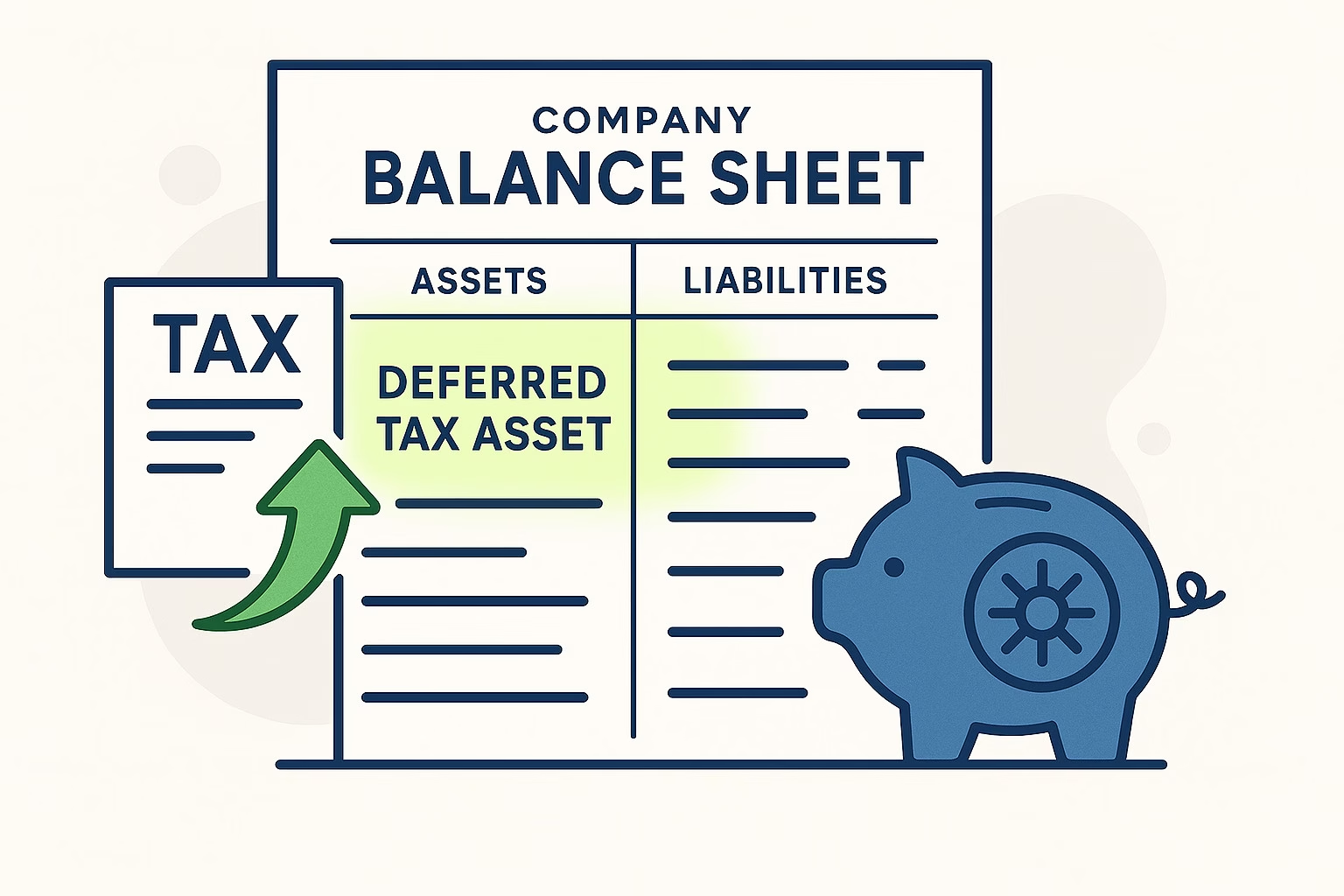A Deferred Tax Asset arises when a company has paid more tax or has tax-related benefits that can be used to reduce future tax liabilities. It’s essentially an accounting way of saying: “We’ve got a tax credit for the future.”
How It Happens
- Overpayment of taxes – The company pays more tax than it ultimately owes.
- Tax losses carried forward – A company has losses this year, but it can offset those against profits in future years.
- Timing differences – Expenses are recognized in the books earlier than they are allowed for tax purposes (e.g., warranty costs, doubtful debts, pensions).
Example
- A company reports an accounting loss of $500,000 in 2025.
- For tax purposes, this loss can be carried forward to offset future taxable profits.
- If the tax rate is 20%, the company records a Deferred Tax Asset of $100,000 ($500,000 × 20%).
- In future profitable years, this DTA reduces the company’s tax expense.
Key Points
- DTAs are listed on the balance sheet as an asset.
- They only have value if the company expects to be profitable in the future (otherwise, there’s nothing to offset).
- The amount recognized is reassessed each year — if future profitability looks unlikely, part of the DTA may be written off.
In short: A Deferred Tax Asset is like prepaid tax that the company can use to lower future tax bills.

